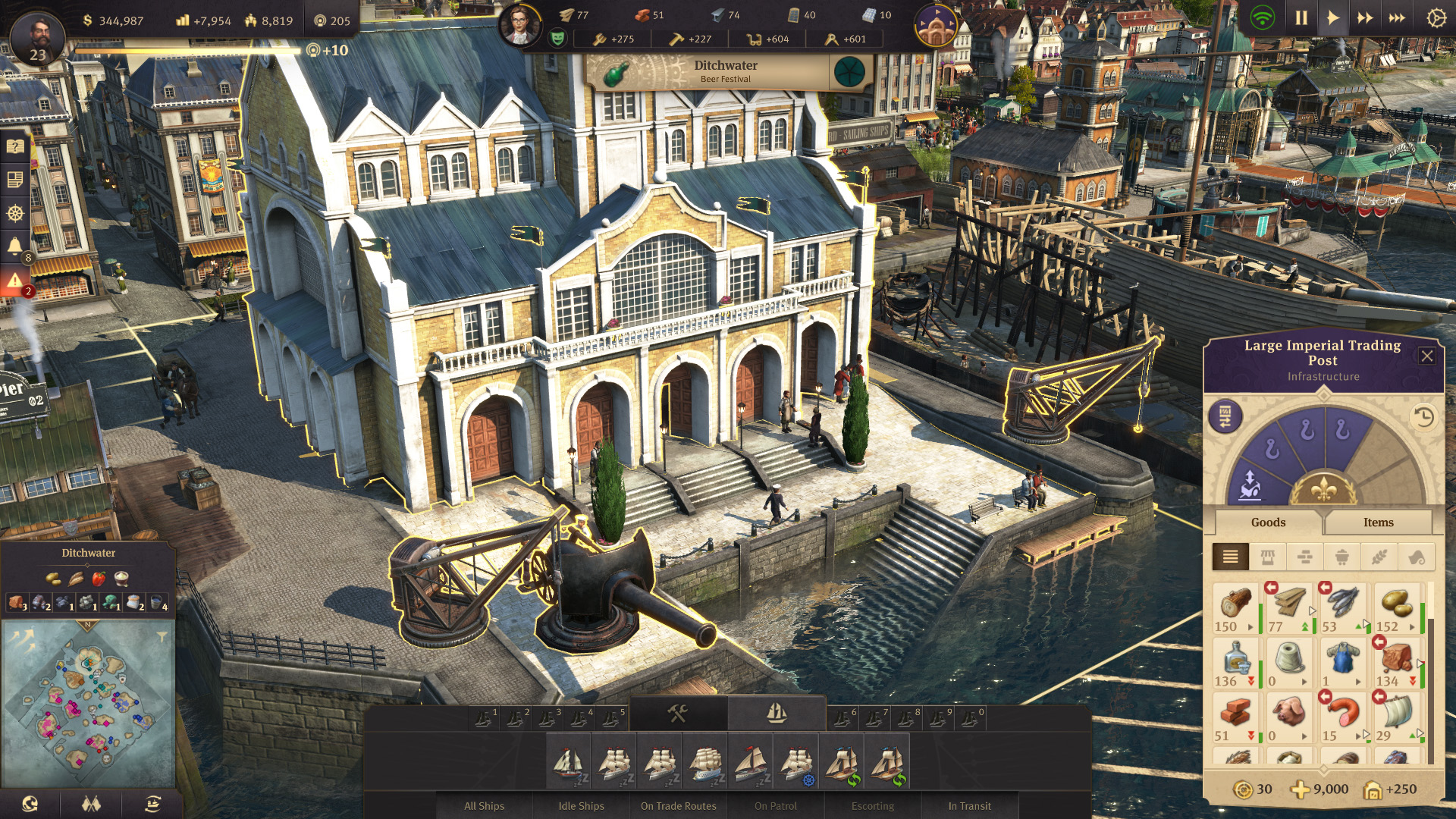
Anno 1800 is one of the most entertaining city-builders of recent years, as I explained in my review last month. But constructing a thriving industrial metropolis requires players to master many different systems, from learning complex production lines to understanding the nuances of trade. It also boasts a surprising amount of depth, to the point where it’s easy to neglect some of its smaller mechanics to your own detriment.
But fear not, young industrialists! PC Gamer is at hand with this handy guide, which will help you navigate through the Old and New worlds of Anno 1800, taking you from a quaint farming village to an industrial megacity.
Anno 1800's production chains are crucial, but there's more you need to know
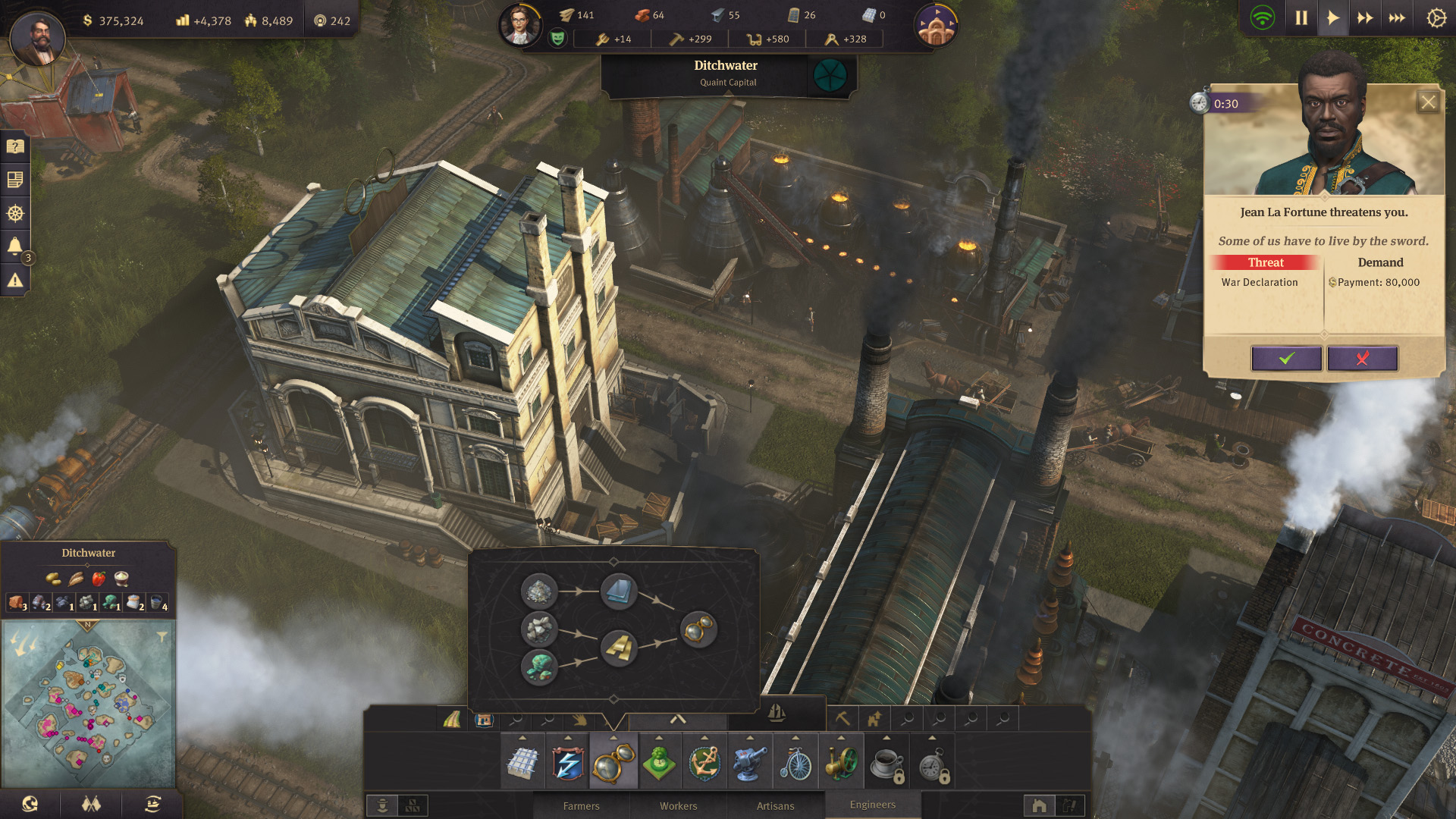
The backbone of any Anno 1800 city its production chains. Most buildings you construct will form part of a chain that inputs raw materials and outputs an item that your city’s populace needs. As a simple example, potato farms produce (wait for it) potatoes, which can then be transported to a distillery to make schnapps, a relatively basic product used mainly to keep your farmers happy.
Effective production, however, involves more than just constructing all the buildings in the chain. The building in question needs to be connected to a road (or in the case of some late-game buildings, a railway), and be situated close to a warehouse so that the produced goods can be quickly stored. It doesn’t matter how distant two buildings in a chain are from one another. If they’re both close to a warehouse, they’ll be able to access the resources they need.
Moreover, every farm and factory you build requires a certain number and type of population to function effectively (we’ll get onto population types shortly). A potato farm only requires 20 farmers, but a steelworks requires 200 workers, so your city needs to be able to support that population surplus there’s any point in building a steelworks. It’s important to check you meet the quota of required citizens before proceeding with any construction project, else you might end up wasting money and resources on a building you’re not yet capable of supporting.
Two other things can affect your overall production. These are population happiness and resource access. You can artificially increase or decrease the production of any resource by clicking on the relevant population tier at the top of the screen, selecting the resource in question, and adjusting the slide-bar accordingly. Be warned though, increasing production reduces happiness, and in the extreme, they could stage a riot that might halt production entirely. Hence it’s important to ensure their a population tier’s needs are catered for before you start forcing them to work harder.
Lastly, some produced resources, like iron ingots, are used for making lots of other products, so you need to ensure you have enough of them in stock, whether that’s by building more smelting plant, cranking up production, or importing them via trade.
Keep up to date with the most important stories and the best deals, as picked by the PC Gamer team.
How to make money in Anno 1800: build houses and grow your population
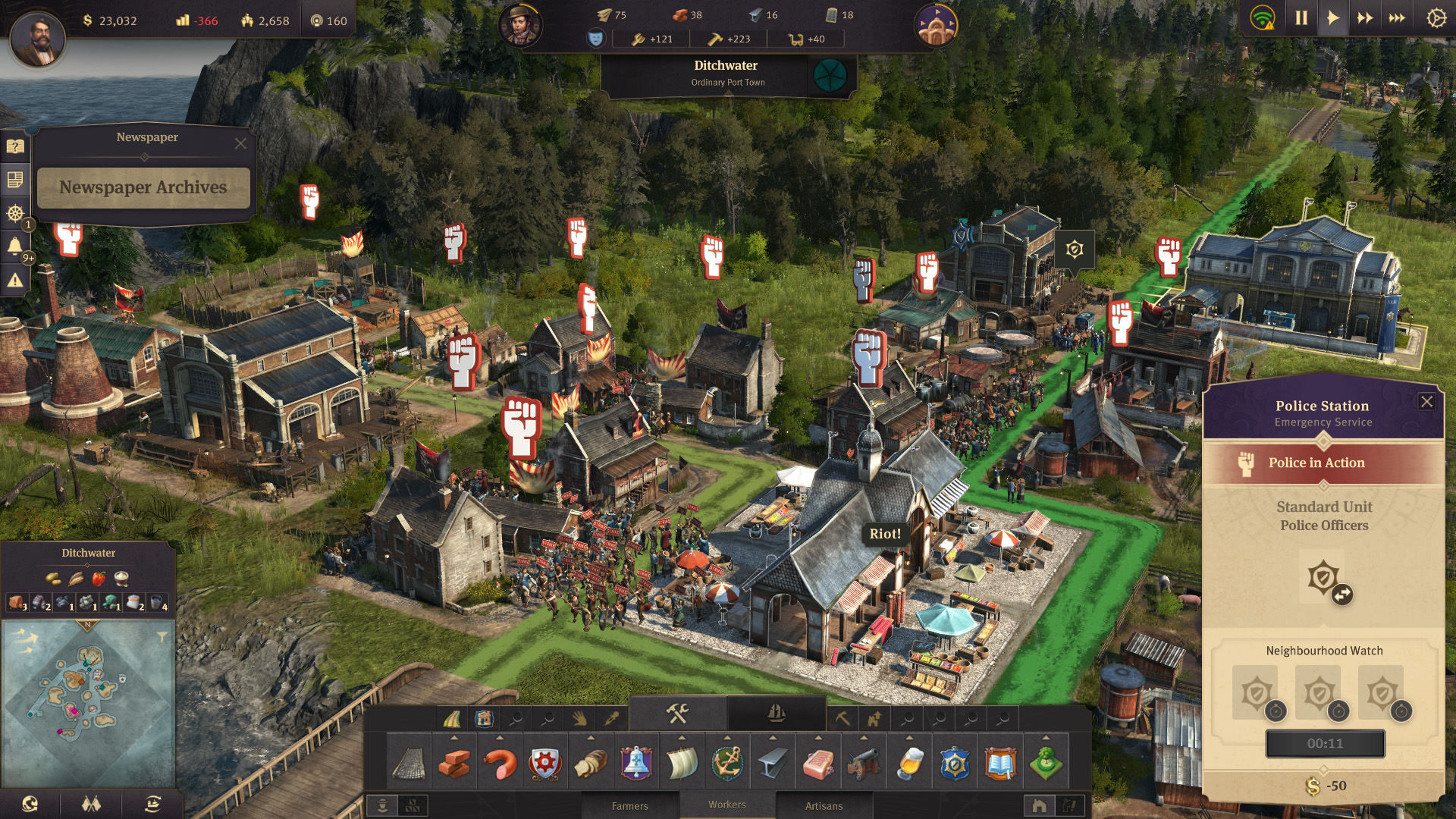
The most important thing you need to know for playing Anno 1800 is that it’s households, not people, which form your main source of income. Each farmhouse you construct earns a set amount of money at regular intervals, while upgrading that farmhouse to house higher population tiers increase that overall income.
This means the best way to earn money in Anno 1800 is simply to build lots of houses. You will need to do this anyway to fill your farms and factories, but it’s important to bear in mind that you can keep on building houses after you’ve met those requirements. Anno 1800 doesn’t simulate unemployment, so there’s no punishment for having a large population surplus. In fact, it’s practically encouraged.
However, while building houses is straightforward enough, growing your population is more complicated. Each house you build starts off empty and gradually fills over time, based on how well you meet the needs of the local population.
Needs and desires are different for each of the seven population tiers Anno 1800 features. There are five in the Old World—farmers, workers, artisans, engineers and investors—and two in the New World—Jornaleros and Oberos. Anno divides needs into two groups; basic needs and luxury needs. Frankly though, you need to fulfil all these needs for your city to thrive. A more pragmatic way to think of need types is production needs and civic building needs.
Farmers, for example, have the basic needs of fish, work clothes, and access to a market. The first two are provided by production chains, but the third requires that every farmhouse is close to a market, which basically means building them at regular intervals. This is the case for any civic building need, whether it’s schools and churches for workers, theatres and universities for artisans, or a boxing ring for Jornaleros. You can check the basic and luxury needs of any household by clicking on it.
Once a house reaches its maximum population, you can upgrade it to the next population tier. When you do this, it’s worth building another farmhouse in its stead. Otherwise, you’ll end up without enough farmers, which will have a knock-on effect for production across the city. Remember that while you can build as many houses as you like, you still need to ensure your city is producing the right resources in the right amounts to cater to those additional needs, else you’ll have a riot on your hands.
Fertility explained in Anno 1800

Fertility is a sneaky little mechanic that you probably won’t notice until it blows up your construction plans like a big seed bomb. Each randomly generated island of an Anno 1800 map has a different soil fertility, meaning they can only grow certain crops. For example, you might discover your starting island cannot grow hops (used for making beer), or that your New World colony is unable to grow cotton.
To maximise your corporation’s production, you’ll need to own multiple islands. Colonising an uninhabited island is very easy, all you need to do is load a ship with 10 wooden planks and 8 steel beams, then sail it to the island of your choice to build a trading post. You will also need to find an island suitable for colonisation, so it’s wise to send your flagship on a grand tour of the map at the game’s outset.
In fact, taking note of your starting island’s fertility should be one of the first things you do. This is because other players (human and AI) will start colonising islands quickly, and it’s much harder to wrest an island from an enemy’s grasp than it is to settle an uninhabited one.
Use trade to boost and balance your economy
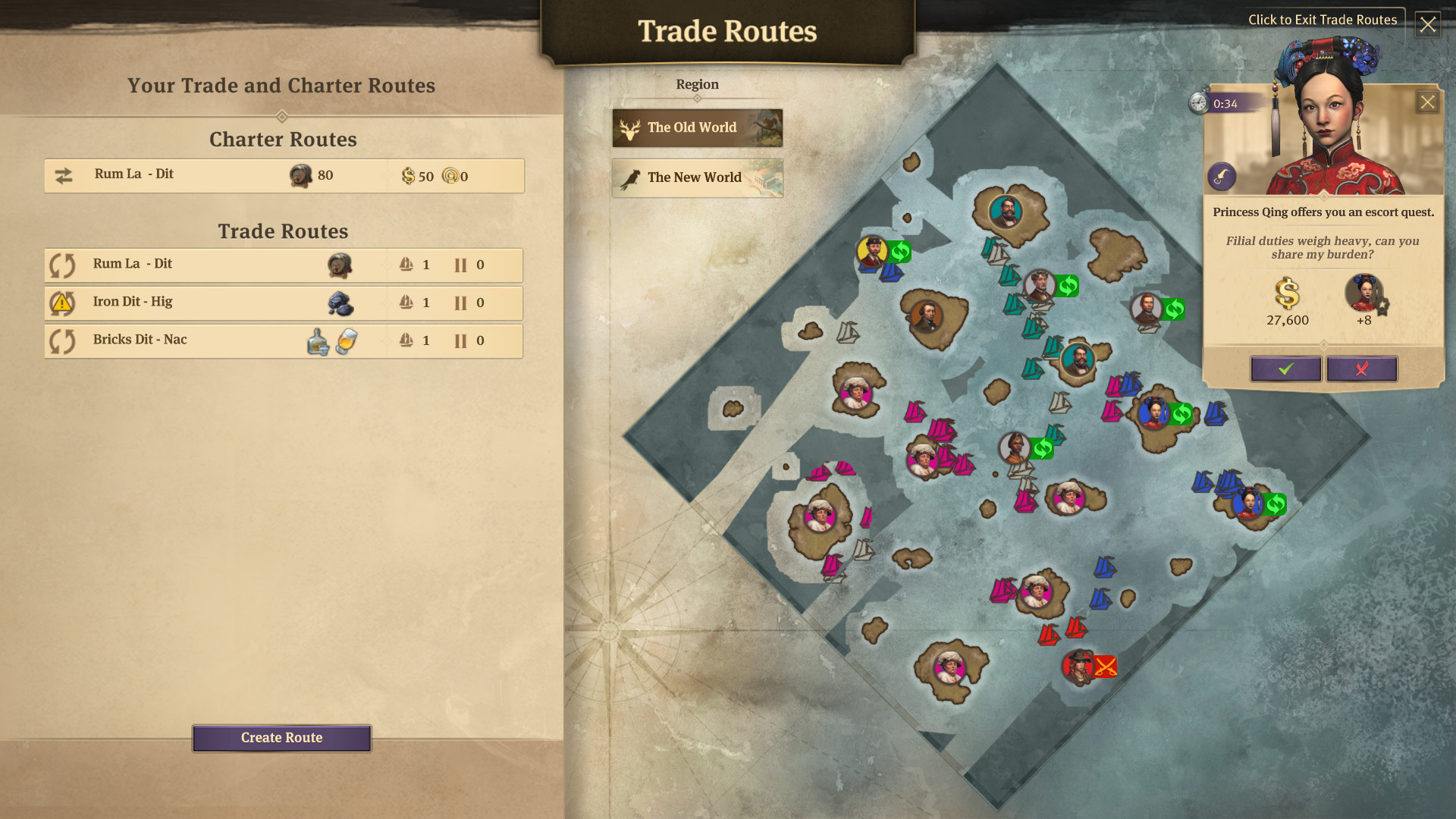
During Anno 1800’s early game, you probably won’t have to think about trade too much. When you start colonising multiple islands and reaching the higher population tiers, however, trade becomes much more important. You can trade products and resources in a couple of ways, through your trading post, or by setting up specific trade routes.
These are slightly different mechanics used for different things. Your trading post is essentially a balancing agent for your economy. At your trading post, you can set each item your city produces to automatically bought, sold or “balanced”—alternating buying and selling to maintain a specific number. If you’re producing a healthy surplus of a specific product, like cannons or clothes, then you can set your trading post to sell that item. Meanwhile, if you can’t produce an item yourself—perhaps due to a lack of fertility—then you can set your trading post to buy it, and fill that gap until you can resolve your production issue.
Trade routes, on the other hand, are used to send specific goods to specific places. For example, if you have one island that can produce beer and one that can’t, then you can set up a trade route to export your beer surplus to the island that needs it. Trade routes are particularly important for getting products from your New World colony, such as rum, to your Old World city, where the hoi-polloi are desperate to get their hands on exotic goods. They’re also highly customisable, letting you set up multiple stops, drop off one item and pick up another, and so forth.
If you don’t have your own ships, or you simply don’t want to micromanage trade routes, then you can set up a charter route, which creates an AI-controlled ship to ferry goods from one selected destination to another. They’re more limited than trade-routes and cost a small amount of money to upkeep, but they’re useful if you want to set up quick trade route without committing one of your own ships to it.
And speaking of ships…
Don’t neglect your navy…or your neighbours

It’s very easy to think of Anno 1800 as a city-building game, because most of what you do revolves around city construction. But it is in fact an RTS, featuring naval combat, diplomacy and conquest. In the early game, none of these appear that important. But they become hugely significant in the mid-to-late game as competition for islands and resources becomes fiercer.
Because of this, you should start preparing for conflict as early as possible, while mitigating the possibility that it’s you who ends up on the defensive. Check the diplomacy screen regularly to see who likes you and who doesn’t. If you can keep your opponents sweet with nice words and the occasional bribe, it’s a good idea to do so. Meanwhile, start building gunboats and frigates as soon as your economy can handle it, and assign a protection flotilla to accompany any schooners or clippers committed to trade routes. Even if you’re not at war with anyone, the seas are prowled by pirates searching for easy prey. If you need to declare war, try to make sure you’re in a position to blockade your enemies’ ports before you do so.
Lastly, don’t forget to build up your own harbour defences and improve them with newly unlocked technologies. Anno 1800 isn’t all sheep farms and windmills. Things can get nasty, and your want to be ready for that.
Electricity explained in Anno 1800
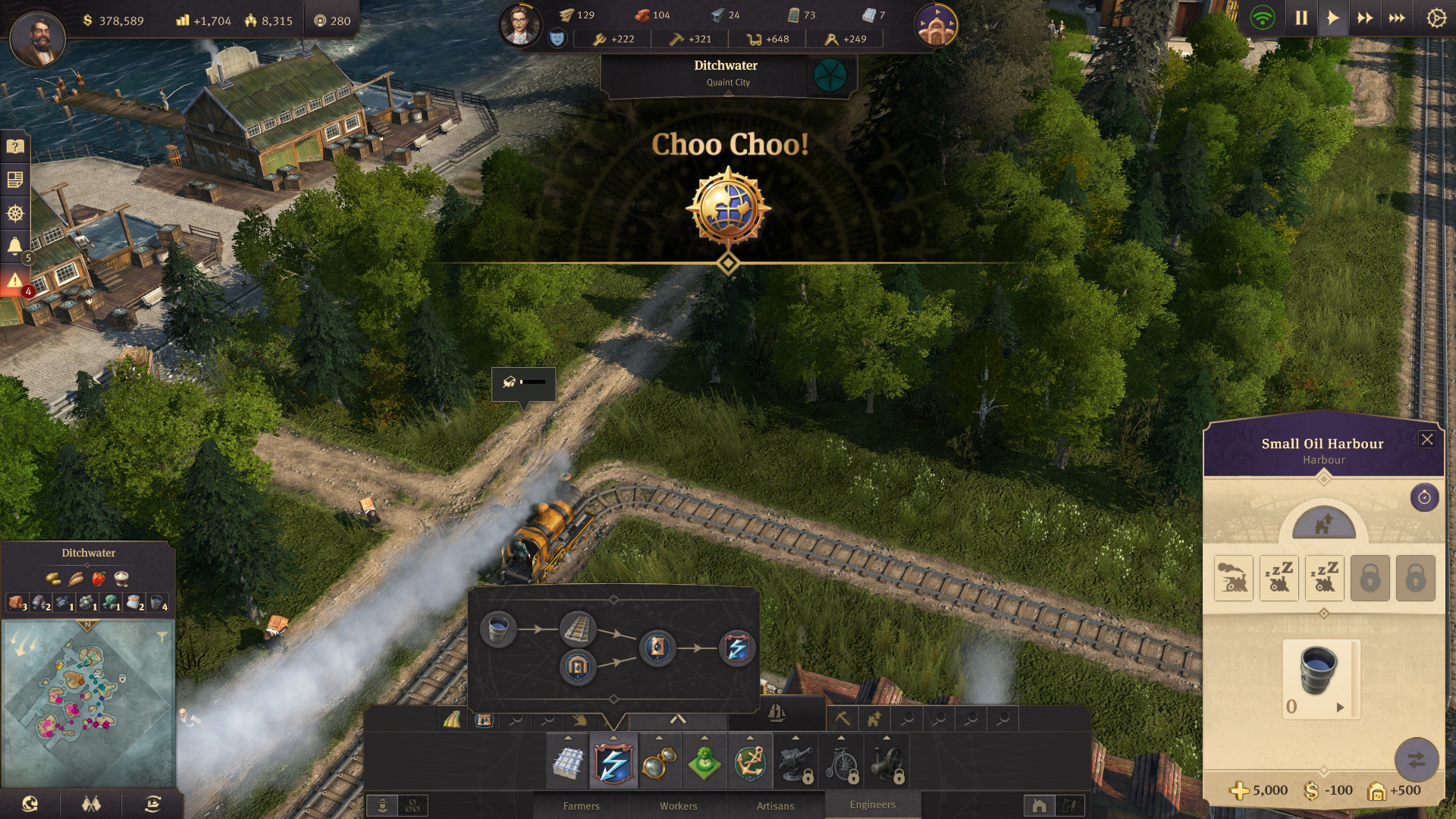
Once you unlock the fourth population tier—Engineers—you’ll also unlock the ability to build oil-burning power-plants. In other words, electricity. Electricity is a slightly odd component of Anno 1800, as it acts both as a powerup and a necessary resource.
Electricity is quite a complicated resource to produce, requiring an oil-drilling plant with added derrick modules, and a special oil-drum dock at your port connected to your oil-plant via railroad. To build an actual power plant, you’ll also need to produce concrete, which is an entirely separate production chain.
Power-plants can be used to provide a significant boost to the production of any late-game factory built within its area-of-effect. But some factories require electricity as a standard component to function. What’s more, before you can upgrade an Engineer’s apartment to the final population tier—investors, you will need to power the Engineer’s apartment with electricity, which means you’ll need to start thinking about where to place those power plants in and around your city.
Zoos in Anno 1800
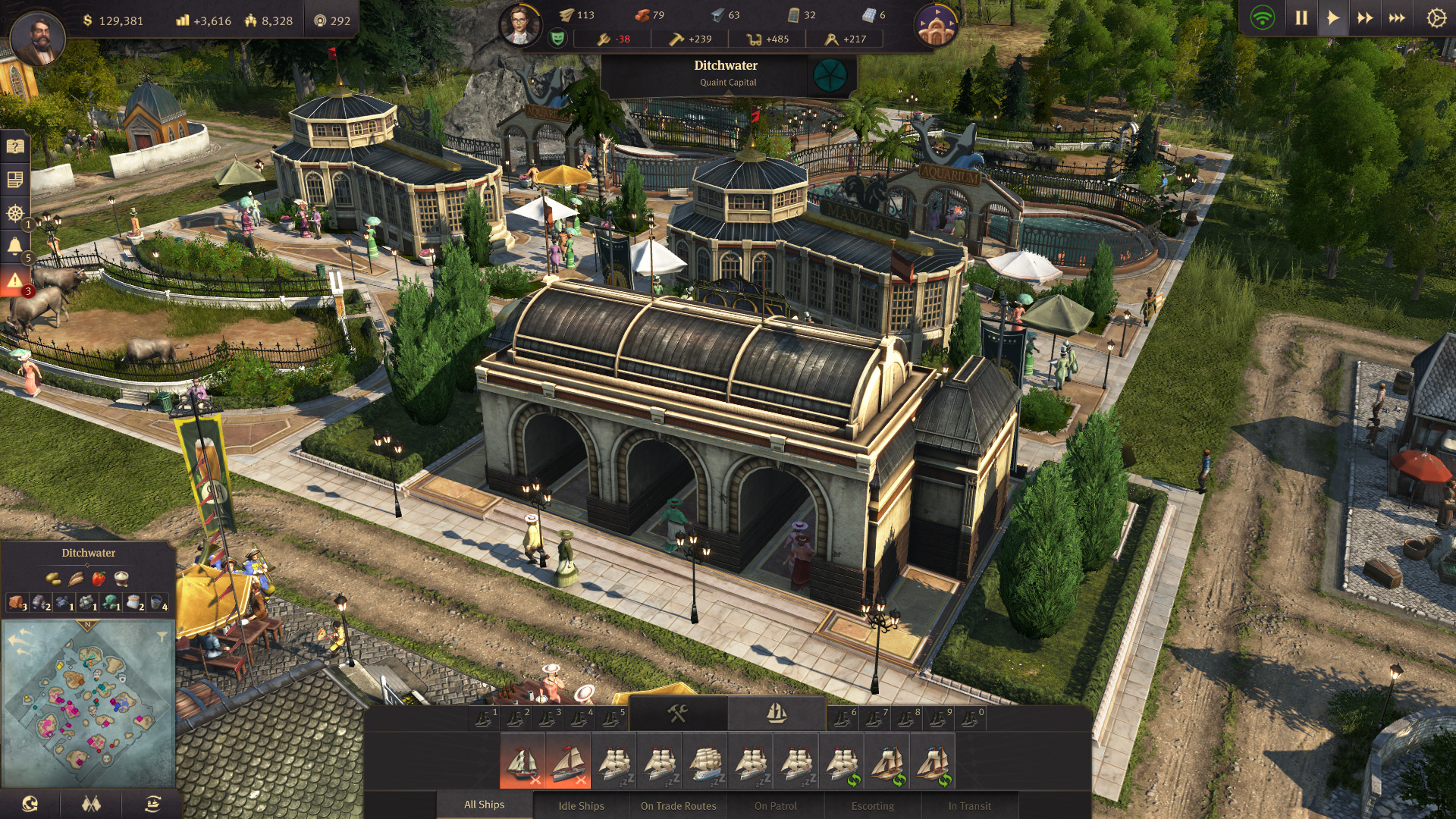
One way to boost your city’s economy is through tourism. Once you unlock Artisans, you can build a special visitors pier on your waterfront, which lets tourists explore your city. They’ll only visit, however, if your city has a high “Attractiveness” rating, which can quite hard to attain when you’ve got two-dozen factories belching a blanket of smog into the sky.
There are various ways to increase your city’s attractiveness, such as keeping your factories away from your residential areas, and building lots of parks and ornaments. But the best way to entice tourists to your city is to build a zoo and a museum.
These buildings are unique in Anno 1800 in that building them is only the start of your interaction with them. They also need to be filled with attractions, artefacts in the case of the museum, and animals for the zoo. To get these, you need to send your ships out on expeditions, dangerous adventures that almost act like a separate game.
We’ll be doing a separate guide dedicated specifically to expeditions, so look for that soon. For now though, it’s worth bearing in mind that while your museum can be built more or less wherever you like, you should set aside plenty of space for your zoo. This is because the zoo is a modular building that can be expanded with enclosures, and there are lots of different animals to find, each of which has its own enclosure. A large zoo filled with animals will be a massive tourist temptation, so it’s worth planning your zoo’s layout well in advance.
Rick has been fascinated by PC gaming since he was seven years old, when he used to sneak into his dad's home office for covert sessions of Doom. He grew up on a diet of similarly unsuitable games, with favourites including Quake, Thief, Half-Life and Deus Ex. Between 2013 and 2022, Rick was games editor of Custom PC magazine and associated website bit-tech.net. But he's always kept one foot in freelance games journalism, writing for publications like Edge, Eurogamer, the Guardian and, naturally, PC Gamer. While he'll play anything that can be controlled with a keyboard and mouse, he has a particular passion for first-person shooters and immersive sims.

